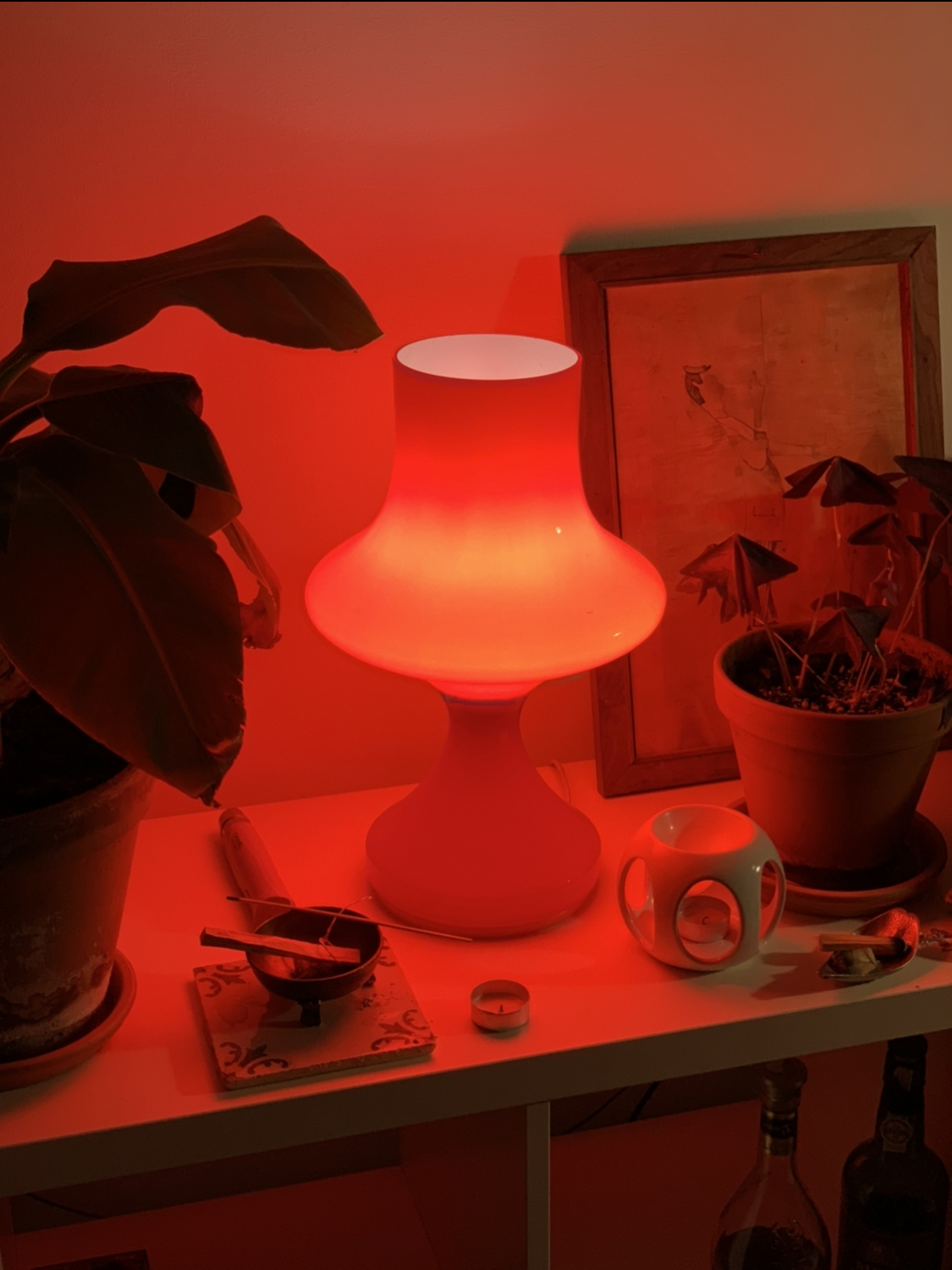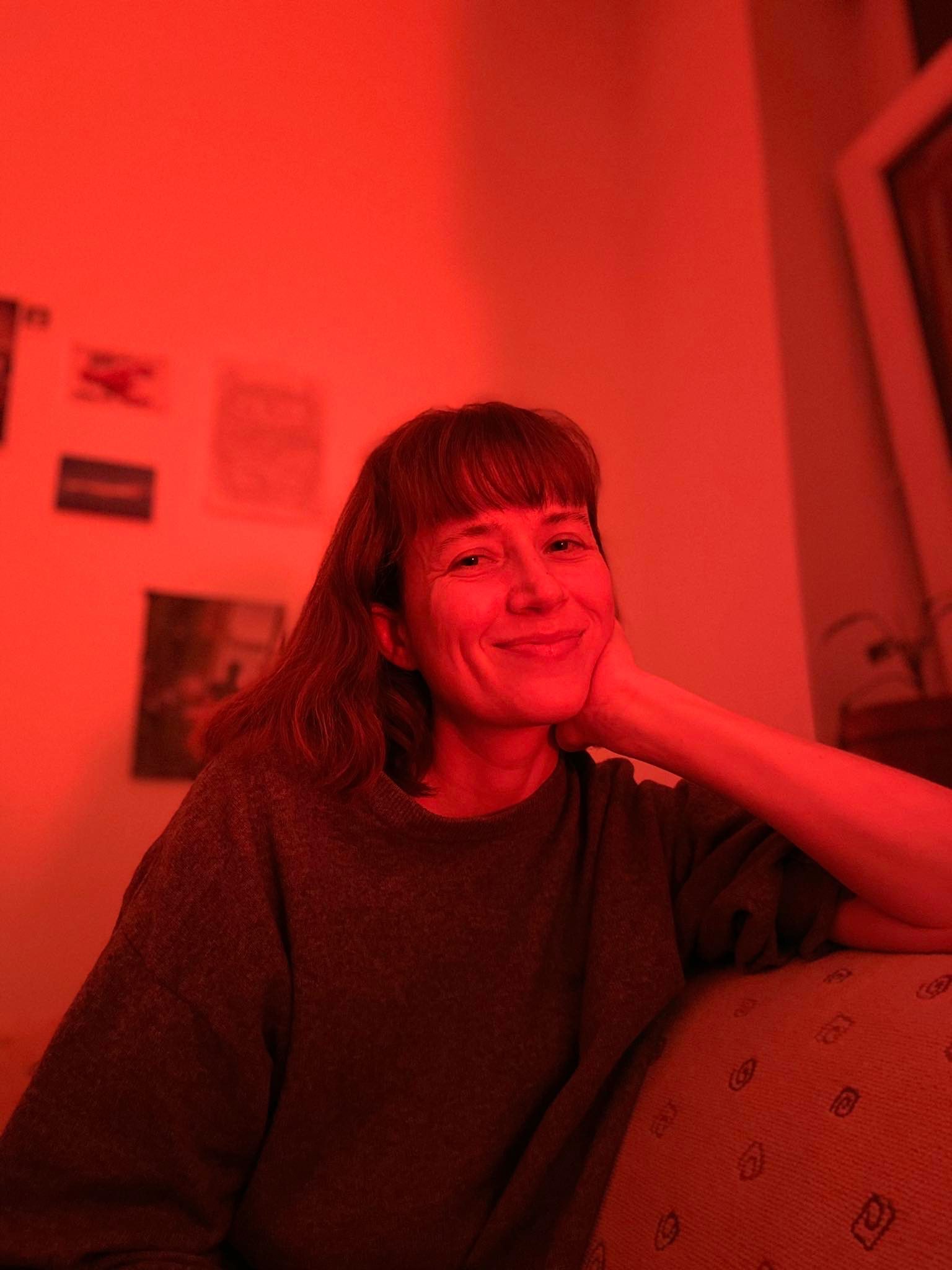Close Things / LIVES OF TABERY LAMP
In an antique shop, visiting in a stranger’s living room, at my grandparents’ house. At a flea market in a strange city, when we squat on the ground to get closer to what lies on an old blanket, to what arouses in us an irresistible urge to touch.
Every time we take an object in our hands, we touch two stories. The first is the story of its maker, the intention that made the object happen, that gave it substance, shape. The second layer is the story of the object and its presence in the world: the object as part of the life of the one who has chosen to live with it.
A coffee cup, a table, a lamp; each object hides more than what we see. Whoever gives life to an object creates something that gradually transcends its practical purpose. Almost every object will one day become part of a life story – an independently growing, unfolding narrative over which the creator himself no longer has any power. From a certain point onwards, the stories of objects unfold completely independently: they find themselves in the flow of ordinary or dramatic fates, changes of regimes, they are subjected to a whole series of owners, they migrate from apartment to apartment, they are entangled in family constellations. Nothing can be anticipated in advance. And yet, to create an object and send it out into the world is to know that we can penetrate people’s lives and sometimes even co-create their meaning.
A cup, a vase, a lamp. In socialist Czechoslovakia, design was one of the good things that emerged. Whether in architecture or in utilitarian objects, this era left us with many valuable pieces that still speak to us with unchanging intensity, grandeur, and quality. The sixties, seventies or eighties: on the one hand, the range of utilitarian objects was so narrow that ordinary households resembled each other in greater or lesser fragments. On the other hand, what could be seen in them was usually of a certain quality and style. Not that all the inhabitants then had taste, which they suddenly lost with the advent of the 1990s – it was just that taste wasn’t very much on offer in those days.
Iconic pieces from this period include a series of red table lamps designed by Czech designer Štepán Tabery in the late 1960s. They went into large-scale production a decade later at the Czech OPP Jihlava factory. They were produced for up to two decades in several shapes, differing from each other in height and curvature of shape. Probably the most famous became the most distinctive of the series, produced under the not entirely atmospheric name of Type M 24. The popularity of the lamp was enormous, it reached perhaps every second home in Czechoslovakia. Little has been written about Tabery and his iconic work. Who knows what he based his design on when creating these shapes. The lamps were created just as the Pop Art period was peaking in the West, and they certainly fit in stylistically. Apart from a highly stylised tree or mushroom, the lamp evokes nothing in shape. It is pure abstraction and yet its appearance attracts, provokes, demands an attitude. It stands on a circular platform, (at the beginning of its production it was made of brass, later of plastic), which gently tapers, only to expand dramatically, but still elegantly, into a convex concave shape. These are beautiful, truly timeless pieces that look exclusive not only because of the design but also because of the material used. They are made of opal glass, with an inner white and outer red layer. When lit, the whole room glows with a soft, orange-reddish glow. I imagine that in Czechoslovakian apartments the lamp made the atmosphere like that of the most decadent “Western” club.
Mr. Tabery has created an iconic object that has become a silent observer of decades of family life. This lamp: an object with a point of view and a strong presence, a curious shape and atmospheric light, anything but a bland piece. A bohemian touch to everyday life. And today? A much sought-after retro object, a rare item in online bazaars, an unofficial cultural heritage to which at least a whole generation relates emotionally.
How many stories has this lamp intertwined with?

I am the owner of one of Tabery’s lamps. It’s as old as I am. It’s been mine since before I could walk. Mom picked it out.
On my birthday, I get almost the same message from my mom, year after year. Mostly, she’ll write to me about how she went to the maternity ward on the evening of November 24 in only brown half-slips because the fall of 1982 was warm. It was drizzling when you were born, she’ll write back. I will always remember the dramatic details of my birth, which she described to me in such a way that they almost became my own memories. It’s such a classic birth story from the socialist era. She was kept waiting too long, alone all night, in the inhospitable conditions of the corridors of a small local hospital, and then, as the morning wore on, my mother grew tired of it, or rather felt it was time, she made her way to the delivery room alone, unprompted, only to be told by an angry and protesting doctor that the labour was already well advanced and that, for the sake of all, action had to be taken at once. I sometimes wonder if it was my mother’s nature or strong instinct that prompted her to break the rules, and that if she hadn’t acted, I might not be here today.
And then there was my dad – or rather, he wasn’t. I was a latchkey kid, my dad already had a big family of his own by the time I came into the world. I was Mom’s dream child, and Dad’s side project.
Mom was very disappointed when he didn’t come to the hospital to see us after I was born. I don’t think she’s ever forgiven him, despite all the circumstances.
Years later, she told me: I wanted to make it up to myself, and I decided to buy myself a present. I first saw the lamp at your godmother’s. I just loved it, she told me.
Tabery’s lamp stood for a long time on the white chest of drawers in our shared room. I didn’t like it as a child, I remember the strange feelings it evoked in me. It seemed strange, cold, alien. It was definitely the most avant-garde piece in our apartment.
Many years later, I became mysteriously attracted to her. I felt I didn’t want to be separated from her. I moved a precious object with a double story to Bratislava. It went with me from apartment to apartment. I lived every party with a latent fear that it would break up. It endured. It’s strange, but to this day I feel like my life hangs on it, that if something happens to the lamp, it could affect me in a fundamental way.
My mother’s lamp, the center of my personal universe, an object that actually symbolizes the life she gave me. The lamp as an emotional legacy. One story among many, and an unsuspecting Mr. Tabery.
The lamp and its immaterial, red light. People have long believed that even objects hold a special power, seeing their function as far beyond practicality. Only my mother knows the secret power of this Tabery lamp.
